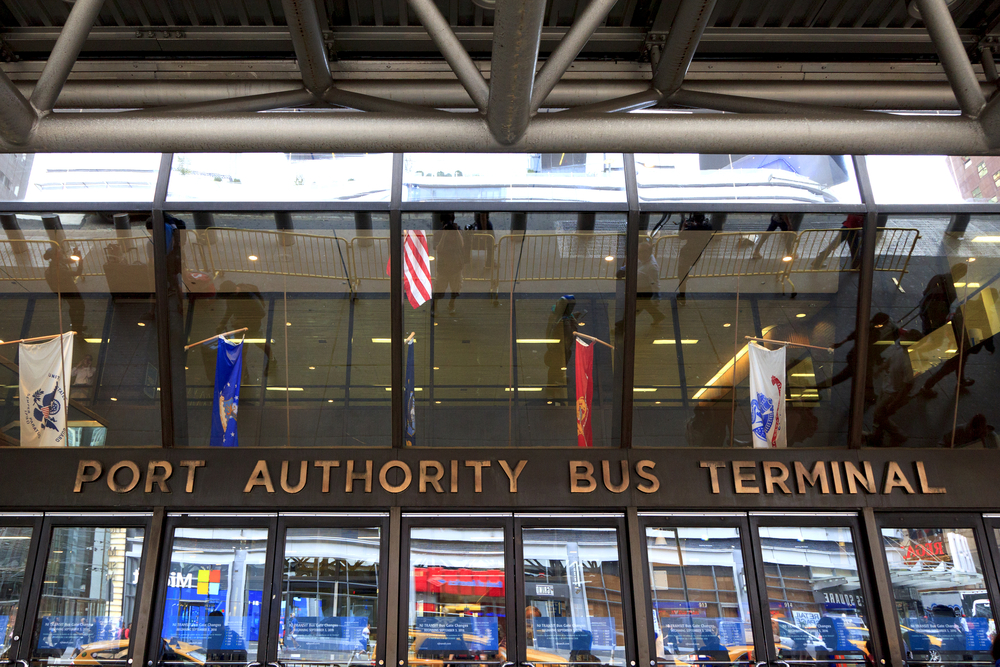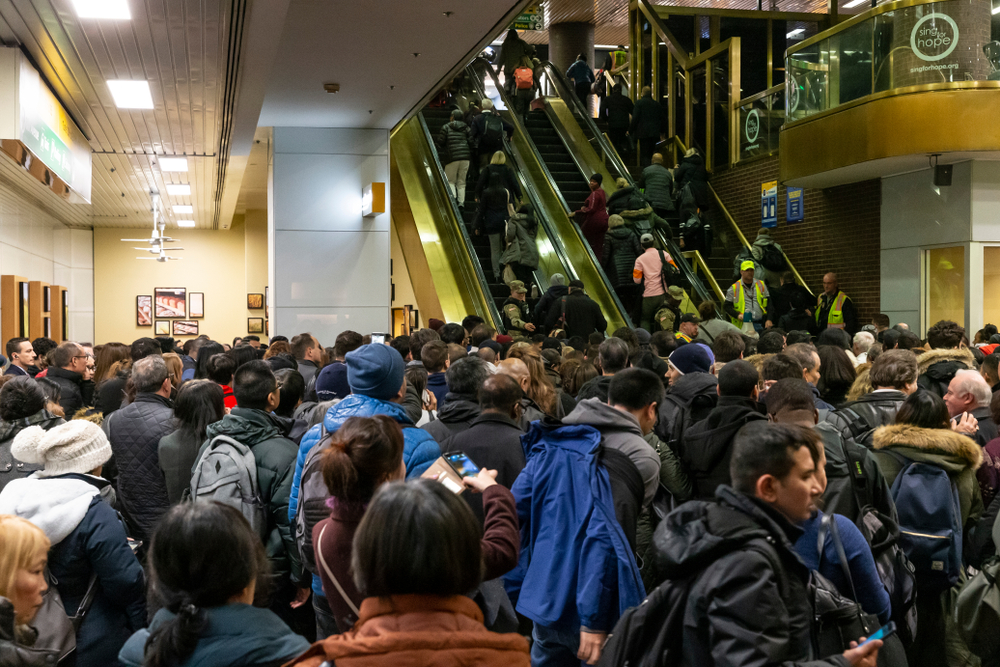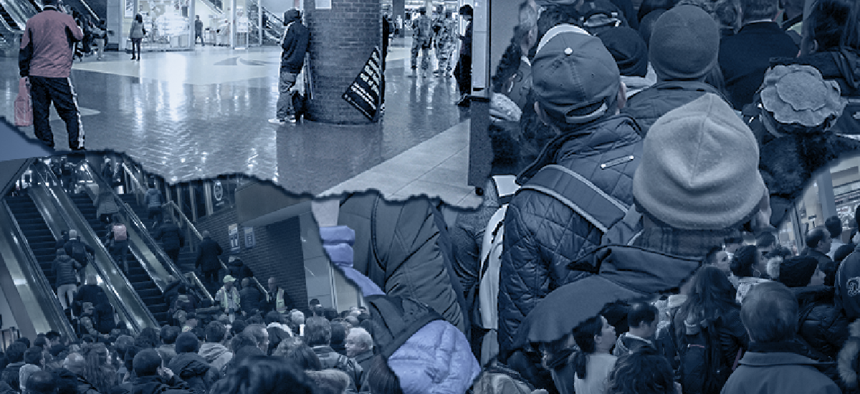The $110 million plan to update and renovate the little-loved Port Authority Bus Terminal in midtown Manhattan is chugging merrily along its bureaucratic way as the giant public benefit corporation seeks a way to best replace the overwhelmed transit hub.
The bus terminal, which straddles 41st Street between Eighth and Ninth avenues, is forecasted to see up to a 50 percent increase in passengers during the evening rush hour or 337,000 passengers daily by 2040, according to official estimates. The agency has been seeking a solution that would appease local residents and meet the growing need.
“It’s a mid-20th century bus terminal trying to meet mid-21st century needs,” said Robert Paaswell, a civil engineer who helped select designs for the new station.
“You’ve got a structure that’s deteriorating. In some places rebar is showing through. People are worried about the long term – I don’t want to say safety but – integrity of the structure,” Paaswell said. “That’s why it’s so important that they do something soon. But they better make up their minds and do something.” The real challenge behind this expensive and complex project, he said, is how to keep the transit hub going and change it at the same time.
In recent days, Port Authority officials circulated a 60-page “draft scoping document” to local elected leaders and will soon send it to the Federal Transit Administration for approval. The document, an official said, describes a series of possible plans, including one to “build in place” – in fact, literally build on top of the existing station – that is favored by residents in the surrounding area. Officials stress that they are years away from completing the planning and review processes and that there is no target date to begin construction, much less complete the replacement project.
You’ve got a structure that’s deteriorating. In some places rebar is showing through." – Robert Paaswell, civil engineer
The scoping document will be released for public review and comment in January or February, an authority official said. Then, a two-year environmental review process will begin under contracts with consultants WSP and AKRF, which they hope to complete before 2021. By then, the Port Authority hopes to know what, exactly, it should build to replace the bus station. After the environmental review and public input, Port Authority board members will make the final decision on a plan, which will need to be again approved by federal authorities. Then, construction crews can break ground.
“We are working closely with New York City, elected officials from New York and New Jersey, as well as the community in general to ensure that, through the environmental review process, we develop the most beneficial solution for all stakeholders,” a spokesman for the Port Authority said in a statement.

Despite the plodding pace of the replacement project, members of the local community board are happy with how things are going. In the past two years, Port Authority officials have taken tours of the neighborhood with community board members and have been engaged in conversations about future plans.
The relationship wasn’t always so collegial.
In 2016, the Port Authority released a plan that included tearing down older buildings west of Ninth Avenue, including Metro Baptist Church, social services agencies and an affordable housing office. Community board members were blindsided by the news. Hundreds showed up at a meeting to protest the plan to bulldoze neighborhood buildings. New York City Councilman Corey Johnson, Manhattan Borough President Gale Brewer, Rep. Jerrold Nadler and others backed the community board. The Port Authority backed off that plan. The build in place option, which Port Authority officials had deemed impractical, was added to the list of possibilities.
“The history of (the) Port Authority of New York (and) New Jersey in this district in the last 50 or 60 years has been one of devastation,” said Jean-Daniel Noland, a member of Manhattan Community Board 4, referring to the many buildings demolished for the Lincoln Tunnel and other major Port Authority projects. “Since we had a meeting at the Metro Baptist Church two years ago where the community said, ‘Don’t tear any more of our buildings down,’ the Port Authority has communicated with the community board. It’s night and day. They have so turned around and begun to communicate with us, to sit down with us, to talk with us. It’s been great.”
The favored plan for all parties is now to build in place. Local residents, elected officials, and some in the Port Authority have expressed support. Still, the draft scoping document includes several options first identified by a design panel in 2016, that include either building underneath the Jacob K. Javits Convention Center or demolishing buildings west of the current site and building there.
The bus terminal was originally built in 1950 and added a north wing in 1979. It currently operates beyond its capacity during peak hours, both in terms of passengers and buses. Inadequate bus parking has been an issue for years, with buses idling on nearby streets in what has become overflow parking, contributing to air pollution.

“Currently the air quality is horrible,” said Christine Berthet, another member of Community Board 4. The board’s main goals are preserving existing buildings, removing buses and ensuring cleaner air. “Those three things are very much our focus. ” Berthet said. “What are they going to do?”
Perhaps the closest recent parallel in New York City is the replacement of the PATH station at the World Trade Center site, which was built alongside the old station – although Paaswell noted that the bus terminal handles far more people and the project will be more complicated. In essence, construction crews would build on top of the existing station and proceed to replace the lower levels piece by piece.
While the Port Authority Bus Terminal replacement is certainly necessary, Paaswell said, it is not inspiring. He is frustrated by a lack of ambition and speed in New York City’s current transportation projects, which are overly concerned with costs that could be addressed with more creative taxation. “Think of the period in which we built Rockefeller Center, the GW Bridge and the Empire State Building. It’s all a period of 10 years,” he said. “And everybody got excited that we extended the Second Avenue subway three stations?”
Editor's note: An earlier version of this story stated that $90 million in renovations were under way. After publication, Port Authority officials clarified that $20 million was recently added on top of an existing $90 million in funding. The story has been updated to reflect a total of $110 million in renovations.


